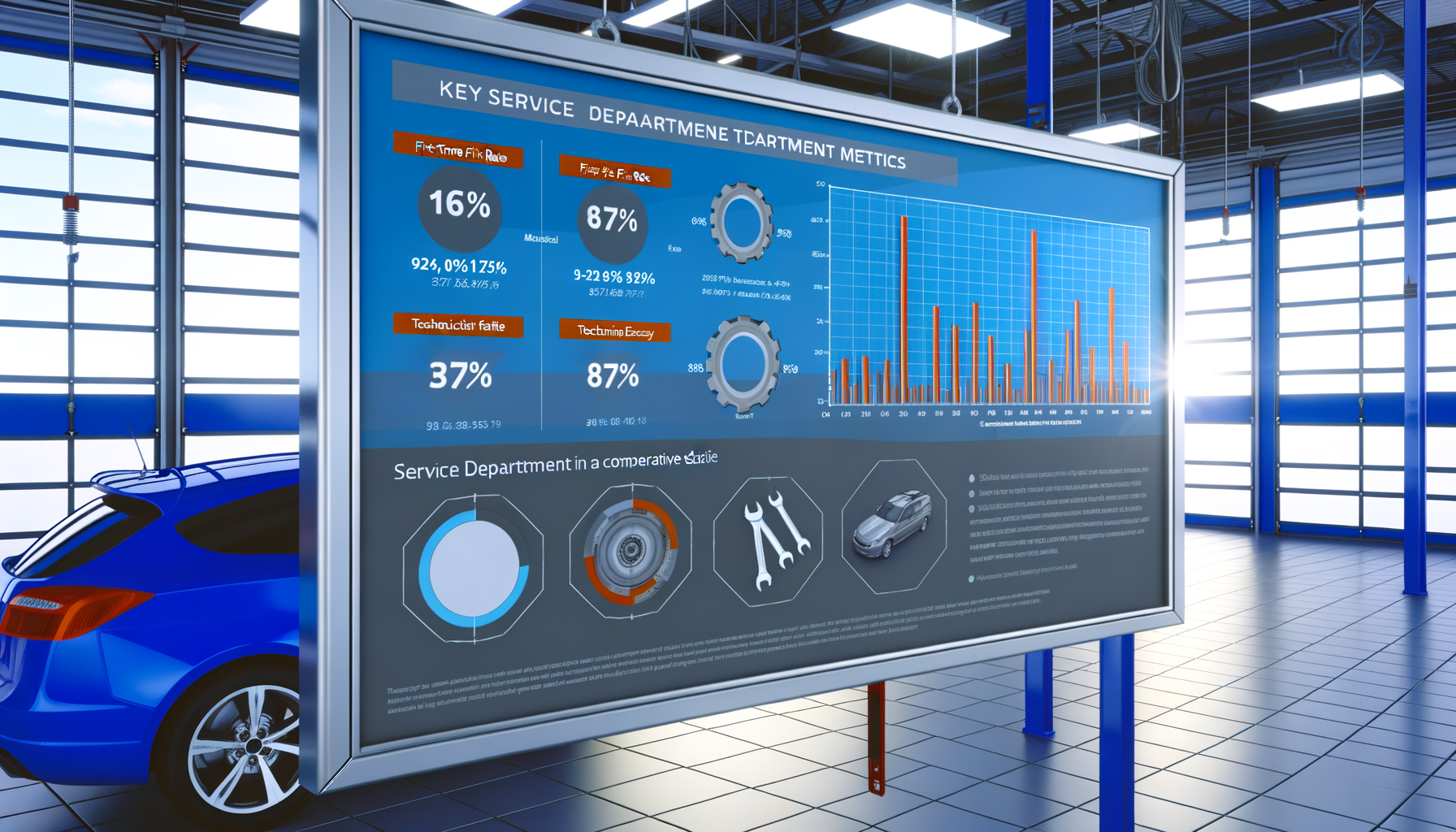Data-Driven Diagnostics: Transforming Service Efficiency with Real-Time Insights

Understanding the Power of Service Department Analytics

In 2025, data-driven decision-making is not just an advantage; it's a necessity for successful automotive service departments. By leveraging analytics, dealerships can identify performance bottlenecks, optimize workflows, and ultimately increase profitability.
The current trend shows a 15% increase in EV-related repairs, necessitating precise analytics to manage this growing segment efficiently. Analytics provide insights into technician productivity, parts inventory management, and service cycle times.
To implement effective analytics, begin by integrating your service management system with advanced data analytics tools. This integration enables real-time data collection and analysis, providing actionable insights into every aspect of service operations.
Key Metrics Every Service Manager Should Track

Understanding which metrics to track is crucial for service department success. Focus on First-Time Fix Rate, Technician Efficiency, and Customer Satisfaction Index to gain a holistic view of your operations.
For example, if your First-Time Fix Rate is below 80%, investigate training opportunities or diagnostic tool upgrades to improve this metric.
Create a dashboard that aggregates these metrics in real-time. Regularly review them with your team to identify areas requiring immediate attention and set actionable goals for improvement.
Choosing the Right Tools for Data-Driven Success

The right tools can transform raw data into powerful insights. Platforms like Auto Pro Solutions offer comprehensive analytics tools tailored for automotive service departments.
Consider tools that offer integration with your existing DMS, provide real-time dashboard access, and include predictive analytics capabilities.
Test different solutions and assess their ease of use, integration capabilities, and support services before making a decision.
Overcoming Common Analytics Challenges

Despite the benefits, dealerships often face challenges in analytics adoption, such as data silos and resistance to change. Address these by fostering a culture of data-driven decision-making.
For instance, a dealership experiencing high staff turnover may struggle with consistent data entry. Implement regular training and use automated data capture tools to mitigate this issue.
Collaborate with all departments to ensure data consistency and develop a unified approach to analytics across the organization.
Implementing Predictive Maintenance for Future-Proof Operations

Predictive maintenance uses analytics to foresee potential equipment failures, reducing downtime and enhancing service reliability. This approach is becoming essential as EV repairs surge by 15%.
Begin by collecting historical data on equipment performance and service outcomes. Use this data to identify patterns and predict future maintenance needs.
Implement predictive analytics software that integrates with your service management system to automate maintenance scheduling and alerts.
Calculating ROI: Justifying Analytics Investments

Investing in analytics requires a clear understanding of ROI. Calculate the return by assessing improvements in efficiency, customer satisfaction, and cost savings.
For example, a 10% increase in Technician Efficiency can lead to significant cost savings and higher service throughput.
Prepare a cost-benefit analysis that includes potential savings from reduced downtime, increased repair accuracy, and improved customer retention.
Related Topics
Ready to take your service department to the next level?
Schedule your demo today and experience the power of Auto Pro Solutions.
Schedule Demo